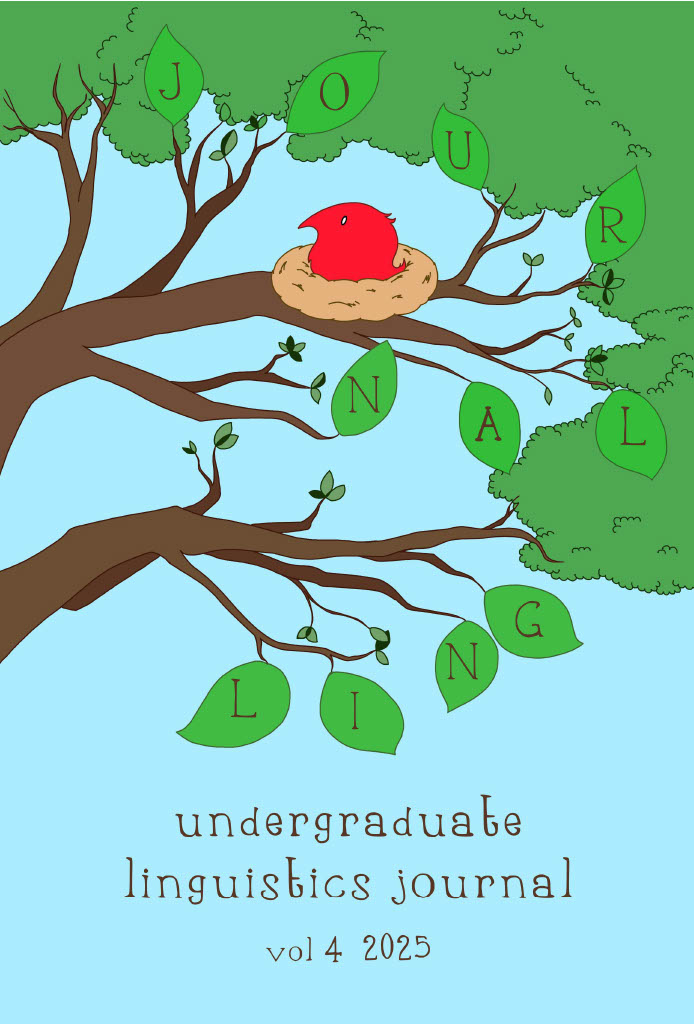Published 2025-04-11
Copyright (c) 2025 Raimundo Cox-Casals

This work is licensed under a Creative Commons Attribution-NoDerivatives 4.0 International License.
Abstract
This paper undertakes an exploration of the relationship between tone and stress, drawing from evidence gathered from three Athabaskan languages. Rather than viewing tone and stress as homologous systems, I challenge the notion that they represent different applications of a singular phonological phenomenon. Through analysis of three understudied languages—Witsuwit’en, Upper Tanana, and Navajo—I posit that the conventional tone continuum inadequately captures languages that incorporate elements from multiple points across the conventional spectrum. The study finds that tone and stress are often conflated because they are indicated with similar acoustic cues but are in fact distinct processes in the phonology. Phonetic evidence, phonological analysis, and diachronic observations are presented to analyze Witsuwit’en’s stress system, Upper Tanana’s tonal system, and the interaction between tone and stress in Navajo. My goal is to disentangle tone and stress as separate mechanisms within language, as they tend to be misanalyzed and conflated for having pitch in common as a phonetic correlate. Exposing their differences in isolation and interactions in co-occurrence will contribute to a deeper understanding of linguistic typologies and help to avoid overlooking diverging entities in linguistic analyses.

